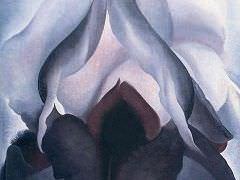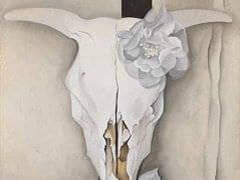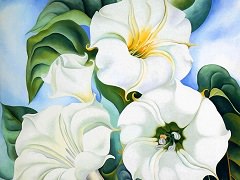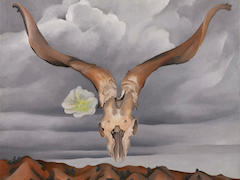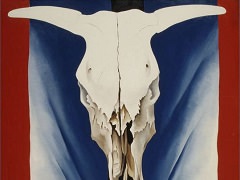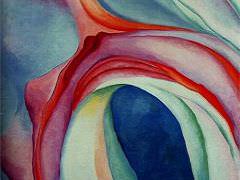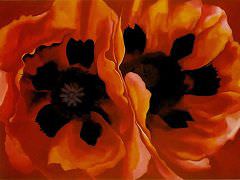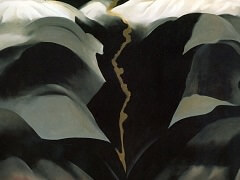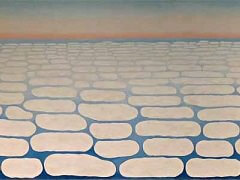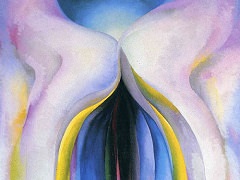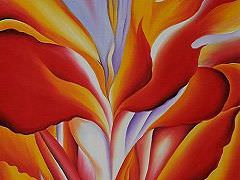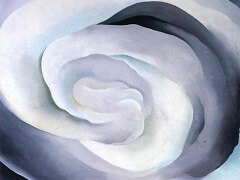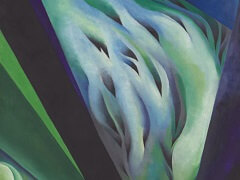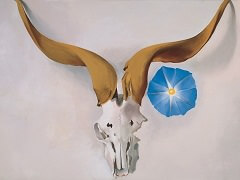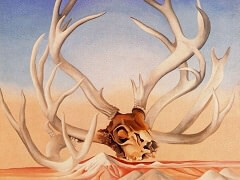
As Georgia O'Keeffe's familiarity with and dedication to New Mexico increased, her tendency to create abstract patterns in landscape increased in the 1940s.
Early in her New Mexico sojourns, O'Keeffe discovered this declivity in the landscape, and often returned to the site, about one hundred and fifty miles northwest of Ghost Ranch, on the Jicarilla Apache reservation.
In Black Hills with Cedar, New Mexico she emphasized the hollow between the humps, designing a landscape with references which seem particularly feminine. Twin hills rise breast-like above a fertile cleavage. The bodily analogy was consistent with the artist's interest in natures' structure and process, pictorial and imaginative concerns which had motivated her from the outset. And, just as in the examinations of leaves and flowers, with familiarity came increased liberties as the artist manipulated her landscape subject. In subsequent treatments of the hills, it was the dark valley between the smooth rises that became increasingly important in her designs. Throughout the 1940s she returned to the subject more than a dozen times, rendering its eroded contours in pastels and in an ambitious series of oils.

